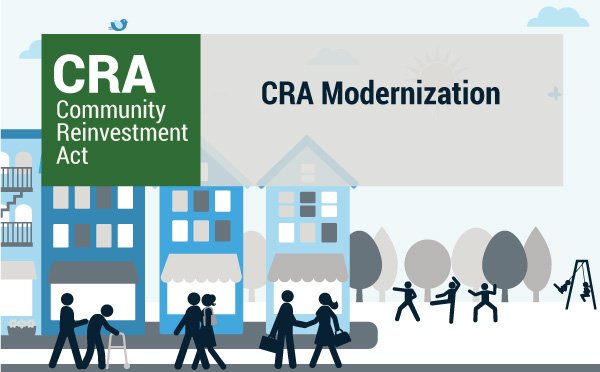The CRA Index: How to Know if Your Bank Properly Serves Its Community
Source: Federal Reserve Bank of New York
You may have heard that the Community Reinvestment Act, or CRA, is about to receive a long-overdue update. While the new CRA is expected to be catalytic for historically underserved communities and will connect more individuals to our financial system, it is still a couple of years away from implementation. Despite the large potential within CRA, many people are still unfamiliar with the program or get lost in its complexities. If you are one of those people and are looking for a simple overview of the program, this post is for you.
What is CRA?
The Community Reinvestment Act (CRA) Index is a score used to monitor whether banks meet the needs of the communities in which they operate. This Index evaluates the spread of customers that are given services at the bank to ensure that banks cannot take deposits from people in low- to moderate-income (LMI) without also investing in those same areas. It was created by Congress in 1977 to encourage banks to meet the needs of all members of the community instead of serving wealthy communities and avoiding disadvantaged areas like many banks at the time did through redlining - the process of separating white and colored communities through financial and resource-based barriers. Regulators, shareholders, and local citizens can use the CRA Index to make sure that they are supporting an institution that benefits all the people it says it serves.
How is it calculated?
Many factors go into calculating a CRA Index. The three main categories that determine the CRA score are the Lending Test, Investment Test, and Service Test. However, only large banks ($2 billion or more in assets) must undergo all three tests. For this article, we will look at the tests from the scope of these large banks.
Lending Test:
Home Mortgage Lending: Are mortgage loans given to people in various geographic locations and income groups?
Small Business Lending: Are small businesses in LMI areas given the capital they need for development?
Consumer Lending: Are LMI individuals offered credit cards, personal loans, and other consumer credit?
2. Investment Test:
Qualified Investments: Does the bank invest in community development initiatives such as affordable housing, small business development, or revitalization projects for LMI communities?
Innovativeness and Complexity: Does the bank invest in unique and impactful projects?
3. Service Test:
Branch Distribution: Are bank branches and ATMs available in LMI areas?
Community Development Services: Does the bank provide financial education, counseling, and other services for LMI communities?
Evaluating the CRA score:
After testing a bank on the categories above, the CRA Index places them in one of four score ranges:
Outstanding: The institution exceeds the requirements of the CRA.
Satisfactory: The institution meets the requirements of the CRA.
Needs to Improve: The institution needs to improve its CRA-related activities.
Substantial Noncompliance: The institution fails to meet the requirements of the CRA.
Banks are regulated by three different federal agencies, all of whom determine a bank’s CRA score. Those agencies are the Office of the Comptroller of the Currency (OCC), the Federal Reserve Board, and the Federal Deposit Insurance Corporation (FDIC).
CRA scores greatly impact a bank’s operations. Banks with low CRA ratings may face challenges in obtaining approval for mergers, acquisitions, and branch expansions. As ratings are public, they can also impact a bank's reputation. A poor rating can lead to public criticism and a loss of customer trust. Finally, banks gain incentives if they have a good rating, improving their performance.
In summary, the CRA is a valuable metric that allows banks to stay accountable for their communities and improve their performance while also giving other entities insightful information about the treatment of LMIs and the development of the community.

